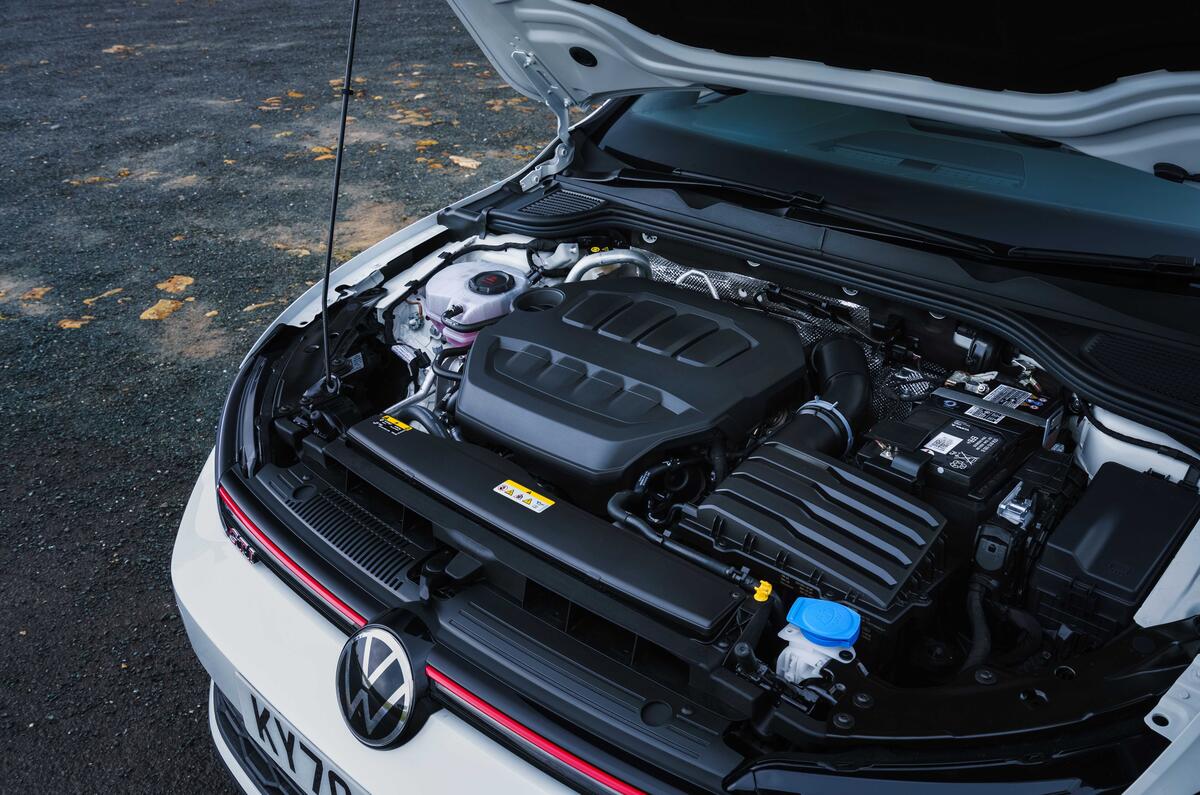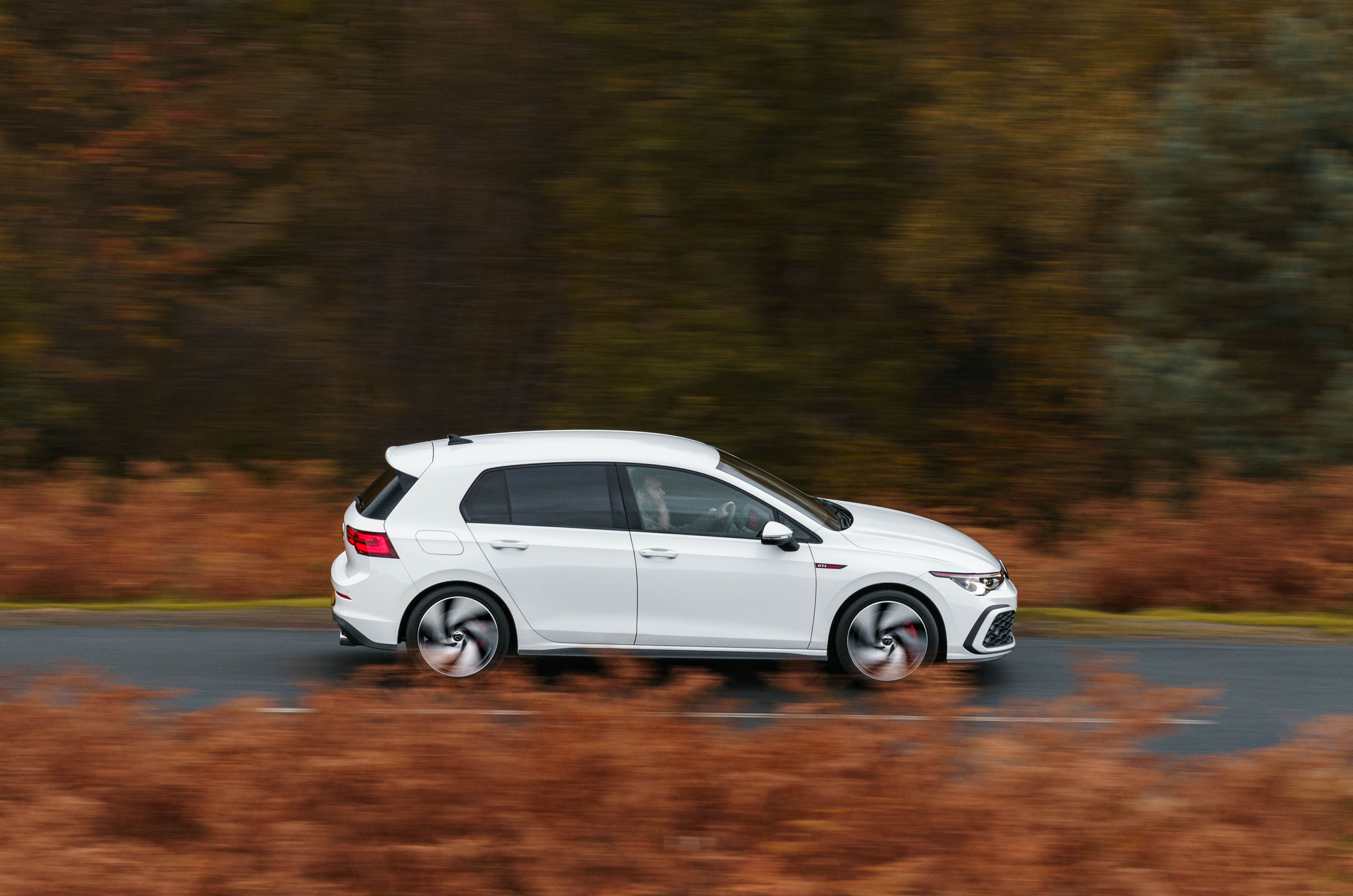As with the exterior, the latest Golf leans heavily into its hot hatch history when you climb aboard. Despite a total design overhaul and the de rigueur addition of multiple TFT screens, you know instantly that you’re sitting inside a GTI. The tartan-checked seat trim is present and correct, as is the red stitching for the chunky three-spoke steering wheel and, of course, the dimpled golf ball finish for this six-speed manual car’s gearlever.
Typically for a Golf, there’s a wide range of seat and wheel adjustment, allowing you to perfectly tailor your driving position. The pedals are well spaced and neatly arranged, allowing easy heel-and-toe changes for when you’re in the mood for going hard. Visibility forward is good, but those trademark C-pillars create an awkward blindspot and the rear screen is shallow and on wet days gets quickly covered in moisture and road grime.
Volkswagen has made much about this eighth-generation car being the ‘all-digital’ Golf, and on first impressions it certainly looks the part. Ahead of the driver is a 10in digital instrument cluster that can be customised to suit the driving mode selected and features an extensive trip computer controlled by buttons on the steering wheel, while sitting to your left on top of the dashboard is a similarly sized touchscreen infotainment system. The combination looks slick and very ‘of the moment’, but it’s not without its flaws.
Aside from touch-sensitive ‘sliders’ set below the screen for the audio volume and cabin temperature control, plus the four ‘hot keys’ for shortcut menu access, all the car’s major functions are controlled using the infotainment system. The graphics are clear and the system is responsive, but too many of the often-used features require multiple stabs at the screen as you delve through various sub-menus, forcing your eyes from the road for longer than you’d want.
Just as concerning for many will be the slight slump in perceived quality, and the Golf no longer being the standard bearer for the awkwardly titled ‘mainstream premium’ corner of the market. Perhaps hoping customers would be dazzled by the glitzy screens, Volkswagen’s bean-counters have been on a bit of a decontenting splurge and introduced some lower-rent flimsy plastics. Nothing that you touch frequently feels anything other than solid and expensive-feeling, but a little exploration turns up some materials that are cheaper to look at and touch.
On the plus side, refinement is relatively strong, with wind noise rarely a problem and roar from the tyres only noticeable on the coarsest surfaces. As with the old car, the engine noise is augmented, meaning a sportier, more intrusive and artificial aural backdrop in Dynamic mode. It’s best left in Comfort, where the small decrease in throttle responsiveness is more than a fair trade-off for the reduction in under-bonnet volume - although the 2.0-litre unit still retains a rorty edge.
As with all Golfs, the GTI is about as spacious as you’d need it to be, packing a decent amount of space into what is a relatively compact package. Large adults will find enough head and leg room in the back, even if their view forward is compromised by the high-backed sports seats, while there’s loads of thoughtfully arranged oddment space, including multiple cupholders, smartphone trays and deep doorbins.
There’s a decent boot too, with a respectable 374 litres of carrying capacity (way behind a Skoda Octavia’s, but around the class average) with the rear seats in place. A false floor can be lowered for taller items or raised to create an almost totally flat floor when the rear seatbacks are folded down (the rear squabs remain in place). Performance doesn’t come at the expense of practicality.













































